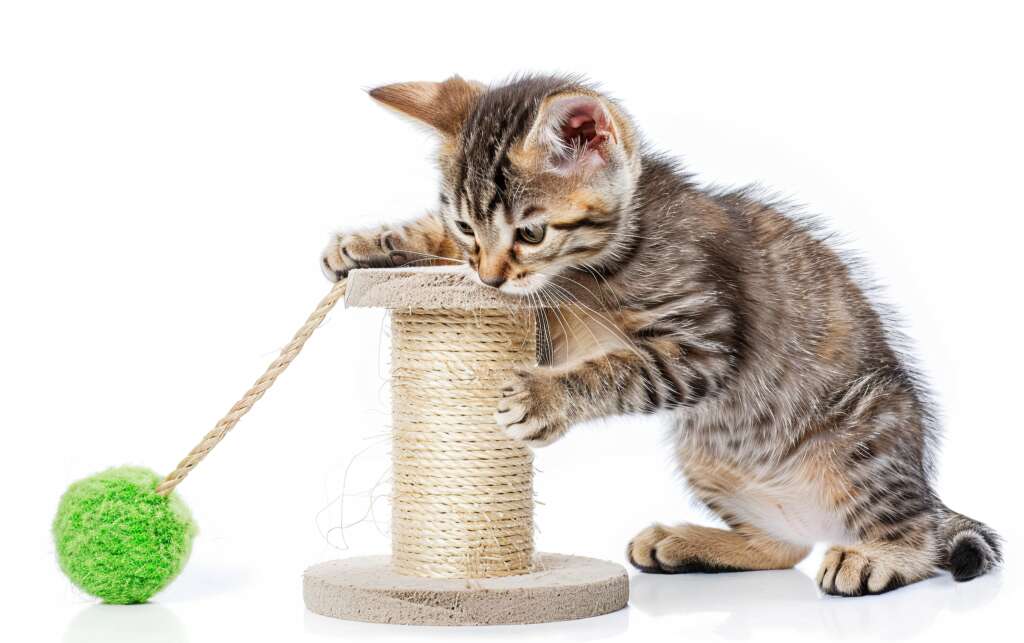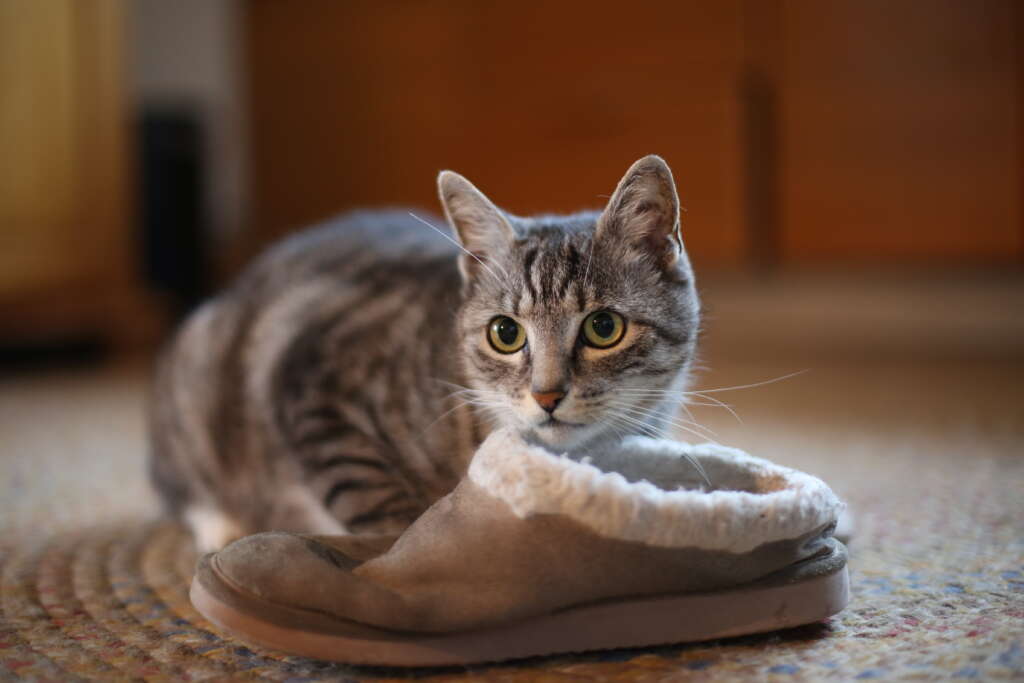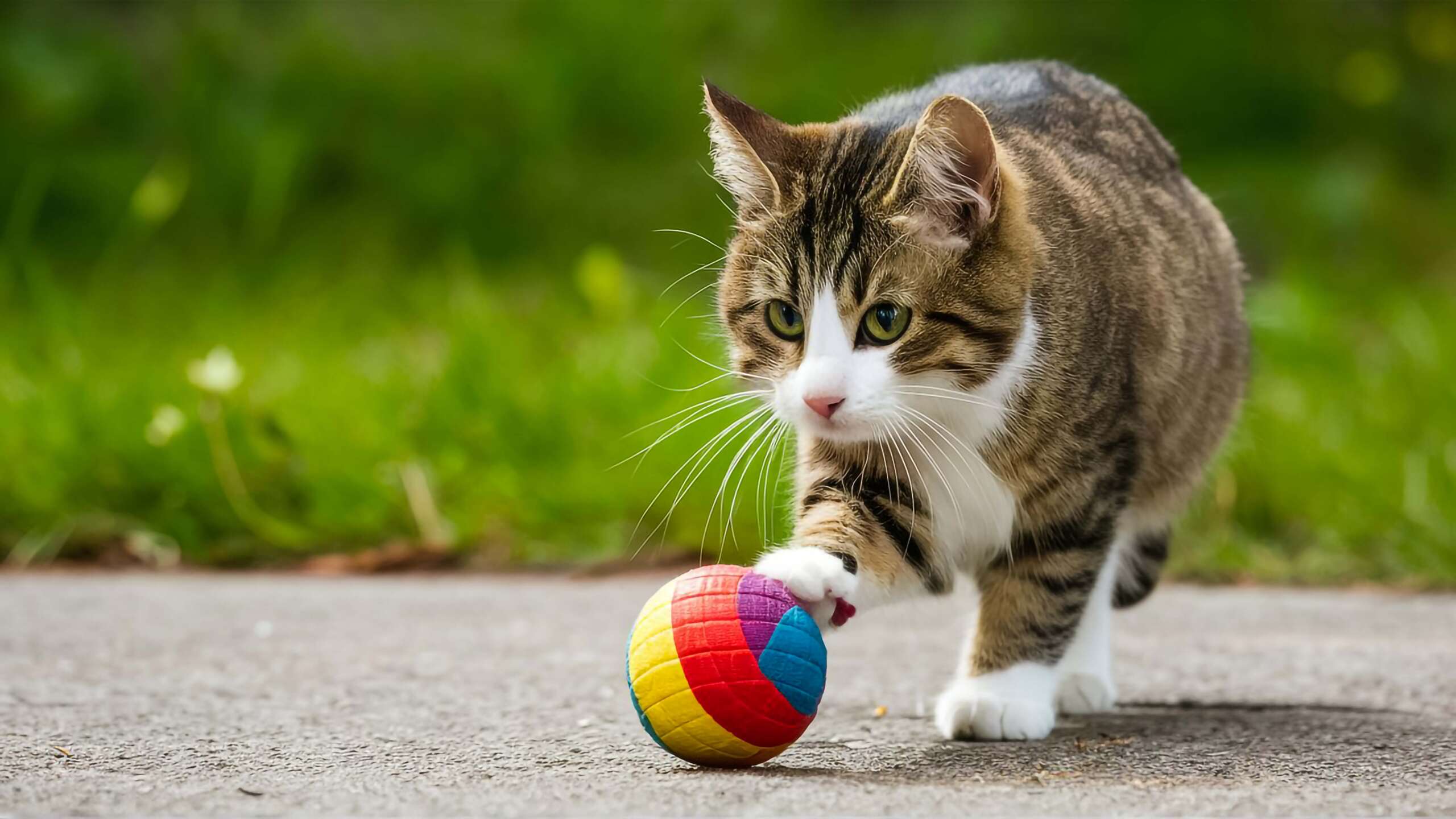Share This Article
Many think cats can’t be as obedient as dogs, but that’s not true. In the world of advanced obedience training, your cat can learn more than just “sit” or “stay”. This is where advanced cat commands and training experienced cats take you deeper into understanding each other. It’s about building a strong bond through training that goes beyond simple tricks.
Advanced cat training is more than fun; it has real benefits. Cats can learn up to 30 amazing tricks with the right guide. From playing with a laser pointer to using a target stick, your cat can do impressive things. This training strengthens your bond and makes sessions fun for both of you.
Are you ready to make your cat smarter, more agile, and emotionally closer to you? With advanced training, you can see big changes. Over 90% of people loved using a clicker and target stick, and many cats changed for the better.
We can show that cats are more than just independent pets. More cat owners are learning how smart and trainable their cats are. So, why not start advanced training with your cat? Let’s explore how your cat can be more responsive and cooperative.
Key Principles of Advanced Obedience Training for Cats
Understanding how cats think and feel is key to using expert cat training tips for better obedience. Cats feel emotions like joy and excitement, which helps them learn. Things like treats make them happy and help them learn faster. Using these feelings makes training more effective.
Professional cat training uses a method called operant conditioning. This means the cat learns by seeing the results of its actions. Clicker training is a type of this, where a click means a treat, helping the cat remember what to do.
Training should be consistent and fun. Short sessions that fit the cat’s mood and personality work best. Starting training when your cat is happy makes it more successful. Rewards like treats, play, or affection help cats learn and stay interested.
It’s important to know what your cat likes and needs. Some cats like treats, while others prefer play or grooming. Tailoring training to each cat keeps them interested in learning. This can be anything from simple commands to complex tricks, making training fun and strengthening the bond with your cat.
Training is not just about teaching skills—it’s about communicating with your cat in a language they understand and respond to positively.
Professionally using expert cat training tips does more than teach obedience. It creates a caring environment that values each cat’s unique nature. This leads to a well-behaved and attentive pet.
The Role of Positive Reinforcement in Expert Cat Training Tips
Positive reinforcement is key to improving your cat’s behavior and skills. It’s essential for cat trick training and taking cat training to the next level. This method rewards your cat right after they do something good, like sitting or rolling over.

Using tools like clickers helps cats link a sound with treats. This sound, or click, tells them they did something right. The kind of treat and when you give it are very important. Knowing what your cat likes best helps them learn faster.
To improve your cat’s training, be consistent and keep sessions short. Cats have short attention spans. Focus on one trick at a time to make sure they learn it well. This method strengthens your bond with your cat, making training fun for both of you.
Adding things like praise or gentle petting can also reward good behavior. Positive reinforcement is more than just treats. It’s about making your cat feel good about learning and doing well.
This kind of training does more than teach tricks. It creates a supportive space that boosts obedience, lowers anxiety, and builds trust. This is the real goal of taking cat training to the next level.
Taking Cat Training to the Next Level with Structured Routines
When cat owners aim for advanced obedience training, structured routines are key. These routines make training predictable and secure, boosting learning. By setting specific times and places for training, cats learn to expect and look forward to learning new things.

Tools like clickers are crucial for advanced obedience training. Clicker training uses a clear cue—the click—followed by a treat reward. This method is great for teaching complex tricks and behaviors. It strengthens the bond between the cat and the owner and keeps the cat’s mind sharp.
It’s important to know how much your cat can handle during training. Training should be fun but not too long to keep the cat engaged. Having a special training area helps the cat link that space with learning and positive experiences.
Structured routines make training smoother and help fix bad behaviors by rewarding good ones. They help cats learn from simple commands to complex tricks. This approach boosts the cat’s skills and happiness, setting the stage for ongoing learning and growth.
Advanced Cat Training Techniques
Training your cat goes beyond basic commands. It deepens your bond and boosts their mind and body. Adding advanced commands and tricks keeps your cat engaged and happy.

Start with simple commands like ‘sit’ or ‘stay’ before moving to harder tricks. These basics help prepare your cat for more complex actions. Tricks like ‘spin’ or ‘high-five’ are fun and good for their brain.
Clickers are key in teaching cats tricks. They mark good behavior so cats know what they did right. Using treats right away helps cats learn fast and well.
Consistency is key, say experts like Julie Posluns from Cat School. Regular, calm training sessions work best. High-value treats make it fun and keep cats interested.
Advanced training does more than entertain; it builds a stronger bond and better communication. It also keeps training interesting and challenging for cats.
Training isn’t just for fun. Commands like ‘come when called’ or ‘leave it’ can save lives. These skills make your cat safer and happier.
Cat training is about making their life better. Emily Hall, an expert in cat adventures, suggests using resources like Cat School. These tools offer clear steps and advice. Advanced training makes life better for cats and their owners, building strong bonds.
Creating a Stimulating and Enriching Training Environment
For professional cat training to work best, a stimulating and enriching environment is key. A space that taps into a cat’s instincts helps them learn. It turns areas into places of learning by adding things like shelves for climbing or scratching pads that are fun to use.
Experts say it’s vital to make these spaces safe and familiar to reduce stress. Stress can harm a cat’s health and behavior. By doing this, cats become more confident and eager to learn from humans.
Tools like the Kassler & Turner Stress Scale help check how comfortable a cat feels. They look for signs like a high-held tail or forward-facing whiskers. These are signs of confidence and curiosity.
Experts recommend a routine with regular play and rewards to help cats learn. Rewards can be treats, toys, or even praise. This approach helps cats show positive behaviors.
There’s a strong link between good training and a cat’s health. Enrichment activities help prevent illnesses like Upper Respiratory Infections (URI) and make cats more adoptable. For Maine Coons, it’s best to use games and short training sessions to keep their minds sharp.
Experts suggest creating a rich and varied environment for each cat. Using target training can make learning fun and keep their well-being in focus.


